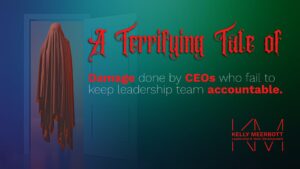Giving feedback to employees successfully creates incredible dividends in performance, creativity, and productivity. But poorly defined, vague, or too critical feedback can harm more than it helps. As an executive leadership coach, I provide clients actionable feedback using a clear, structured system my clients find useful and insightful for both personal and professional growth. I also encourage clients to provide their teams with the same supportive and actionable structure to help build a great corporate culture.
Here’s how to create an environment where potential is realized and excellence thrives.
1. Use the SBI Model
To provide clear and effective feedback, coaches often utilize the SBI Model, which stands for Situation, Behavior, & Impact (SBI). By breaking it down into its components, it facilitates deeper understanding, providing clarity and context that is specific and actionable.
Here’s how that works:
- Situation: Set the stage by describing the context or circumstances in which the behavior occurred. Provide relevant background information to frame the feedback effectively.
- Behavior: Detail the specific actions or behaviors observed, focusing on objective observations rather than interpretations. Use concrete examples to illustrate the behavior clearly.
- Impact: Explain the consequences or effects of the behavior on others or the organization. Help clients understand the significance of their actions and the implications for their professional growth.
Now let’s delve into the key steps for building an effective feedback process.
2. Build Trust by Creating a Safe Space
When time and effort is invested into nurturing trust, a space is created for safe, comfortable sharing of vulnerabilities while also exploring growth opportunities.
- Trust is the bedrock of any coaching or working relationship. Without it, meaningful progress is challenging to achieve.
- Before diving into feedback, ensure the receiver feels valued and respected by establishing a foundation of trust through active listening and empathy.
- Trust lowers defenses and helps receivers to engage more openly in the process, while laying the groundwork for constructive feedback.
3. Focus Giving Feedback on Observable Behaviors
Without judgement, ground feedback within the context of observable actions rather than subjective interpretations.
- Identify the specific behavior or action that needs addressing.
- Describe the behavior objectively.
- Illustrate how the behavior influences others or contributes to organizational outcomes.
4. Be Balanced While Giving Feedback.
Effective feedback strikes a balance between positive reinforcement and constructive criticism. Be sure to also acknowledge achievements and contributions.
- Recognize progress to reinforce confidence and motivation.
- Highlight attributes and praise efforts and achievements.
- Address areas for improvement sensitively, focusing on growth opportunities rather than shortcomings.
5. Giving Feedback Means Being Specific
Always be specific and avoid generalizations. Utilize concrete examples and evidence so team members understand precisely what behaviors need addressing and how they can improve.
- Illustrate the behavior in question by choosing recent examples that provide context and clarity.
- Describe the behavior in detail, using specific language and examples to paint a clear picture. Do not be vague.
- Demonstrate consequences of real-life actions to provide concrete evidence of the impact of the behavior.
Always remember feedback is not just a tool — it’s a vehicle for growth and transformation. Use these tools cultivate environments where feedback is embraced as a catalyst for learning and development — building powerful teams that drive your organization to new heights of success.
________
Kelly Meerbott, PCC is a renowned expert in executive leadership, an award winning coach, author, and TEDx Speaker. As a leadership coach, Kelly has worked with senior executives, the C-suite, and more than 400 high-ranking officers in the US military. Her customized strategies have demonstrated and measurable results, and her trauma-informed approach and PTSD training makes her unique in the industry. Combined with her coaching experience, Kelly creates a psychologically safe space for confidentiality where clients can be honest and truthful so they can break through their worst roadblocks. Kelly has multiple coaching certifications in Human & Organizational Transformation, Unconscious Bias, Leadership, cognitive therapy, improv, and communications. She is a certified clinical trauma specialist.
Currently accepting new clients for late 2024-2025, Kelly invites you to discover how her coaching can transform your leadership journey.





